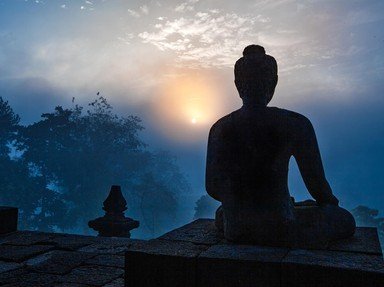Quiz Answer Key and Fun Facts
1. "Dia de Muertos" or the "Day of the Dead" is celebrated in Mexico to coincide with the Christian observances of Allhallowtide. Traditionally, the alcoholic beverage of pulque is consumed on this day. What is it made of?
2. Moving south, Ecuadorians prepare a spicy drink called colada morada on the "Day of the Dead". What distinct colour does it have?
3. In Guatemala, a traditional dish called fiambre is prepared and eaten only on the "Day of the Dead". What type of food is it?
4. Chuseok is a time when the people of South Korea return to their hometowns to honour their ancestors. What occasion does this festival coincide with?
5. "Gai Jatra", literally "Cow Festival", is an occasion for commemorating the dead in Nepal. Do the people eat beef during this celebration?
6. Hindus in India pay their respects to their ancestors during the period of Pitru Paksha. Which of these would *not* be part of the food offerings?
7. Radonitsa is the day designated by the Russian Orthodox Church to remember the dead. One of the foods traditionally eaten on this day is kulich which is classified as what?
8. Which of these are offered to the dead during the Cambodian festival of Pchum Ben or "Ancestor Day"?
9. In which country is the celebration of "Ancestors Day" accompanied by the eating of dumplings called qingtuan?
10. Which ancient culture celebrated the festival of Lemuria and prepared 'mola salsa' as an offering to the dead?
Source: Author
zorba_scank
This quiz was reviewed by FunTrivia editor
stedman before going online.
Any errors found in FunTrivia content are routinely corrected through our feedback system.
